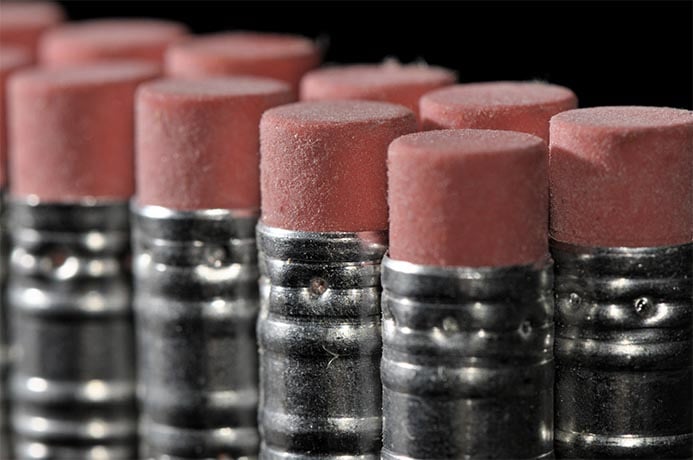Have you ever had a new computer replace an older one before? Sometimes, if the older computer is still not very outdated, you can sell the older computer off to someone who needs it. Of course, you don’t want the new buyer to have access to all your files, so you’ll want to delete them before you pass the computer on. Did you know, however, that someone obtaining an old computer can still access the data on it, even after you’ve deleted the files?
It may sound very strange that someone can still do that; after all, the files are deleted, right? How can someone access a file that’s no longer there? In order to answer this, we need to take a look at how a file is deleted on a computer.
How Files Are Deleted
So, let’s say you’ve deleted a picture on your computer. Either you’ve dragged it to the Recycle Bin and emptied it, or you directly deleted it using the SHIFT-DEL keyboard command. It’s easy to assume that when you do this, the computer accesses the hard drive, finds the picture on it, and scrubs it away until it’s gone. The truth, however, is a little different.
When your computer puts a file on the hard drive, it marks the location of the file using what’s called a ‘pointer’. This acts as a flag telling the computer where on the hard drive the file is, as well as how big it is. When the comput er goes to store new files, it uses these pointers as a reference to make sure it’s not saving the files over already existing ones.
When you delete a file, the computer doesn’t erase the data at all. All it does is remove the pointers on the file you’ve deleted. This means that the file’s space is available for other files to be stored in. As you create, download, and install new files, the data slowly overwrites the file you’ve ‘deleted’.
Do you see the problem here? If you delete all the data on a hard drive and then sell it off, all your files are still on the hard drive; they’re just without their pointers. All it takes is someone to use specialist software that looks for these pointerless files and makes them available again, and they can access your files. That’s definitely not ideal!
Cleaning Your Hard Drive
So, it looks like the solution to our problem is not to delete the files using something like the recycle bin, as that would just remove the pointers. To truly delete the files, we’re going to have to scrub the data off of the hard disk.
If you don’t want to sell the hard drive on and want to throw it away, you don’t need to do a great deal to protect the data on it. Simply turn the hard drive upside-down and break the disc you see underneath. This will destroy the hard drive, and make the data on it unreadable. Then you can safely throw the hard drive away without worrying about someone retrieving it and accessing your data.
If you want to keep the hard drive in working order so you can sell it on, things get a little trickier. You’ll have to use tools like Darik’s Boot and Nuke, CCleaner, and Eraser to do the job. They make sure files are totally gone by writing junk data onto the hard drive, overwriting every file stored on it. Should someone try to access your data after you sell the hard drive on, they’ll get nothing but garbage to work with.
They’re advanced tools, however, and take a lot of expertise to use and run properly. If it proves to be too difficult to you, try taking your computer to a Microsoft certified refurbisher and let them know you want the hard drive completely wiped so you can sell it on.
The next time you’ve deleted a file using the Recycle Bin and believe that it’s totally gone, think again! Without using specialist tools, the file is still there; just withouts its pointers. This is useful if you accidentally delete it and want to recover it using a tool like Recuva, but for keeping your files safe from prying eyes, make sure you wipe your hard drive completely before sending it anywhere!
Learn More
How a Hard Drive Works
https://cs.stanford.edu/people/nick/how-hard-drive-works/
How is data physically written, read and stored inside hard drives?
http://physics.stackexchange.com/questions/66914/how-is-data-physically-written-read-and-stored-inside-hard-drives
https://en.wikipedia.org/wiki/Magnetic_storage
https://en.wikipedia.org/wiki/Flash_memory
How to securely wipe sensitive files–or your entire hard drive
http://www.pcworld.com/article/2039796/how-to-securely-wipe-sensitive-files-or-your-entire-hard-drive.html
How to securely erase hard drives (HDDs) and solid state drives (SSDs)
http://www.zdnet.com/article/how-to-securely-erase-hard-drives-hdds-and-solid-state-drives-ssds/
Darik’s Boot and Nuke (DBAN)
http://dban.org/
https://www.blancco.com/
CCleaner
https://www.piriform.com/ccleaner

